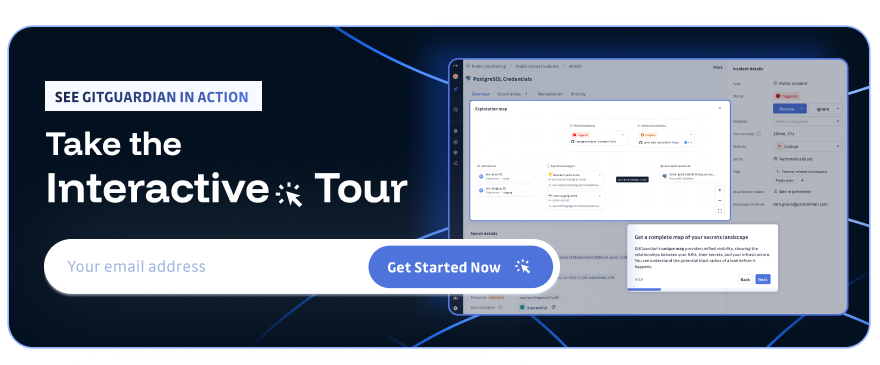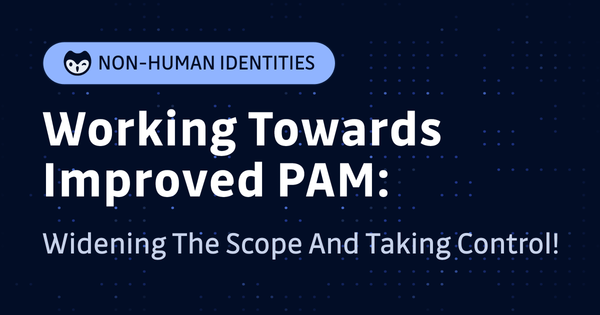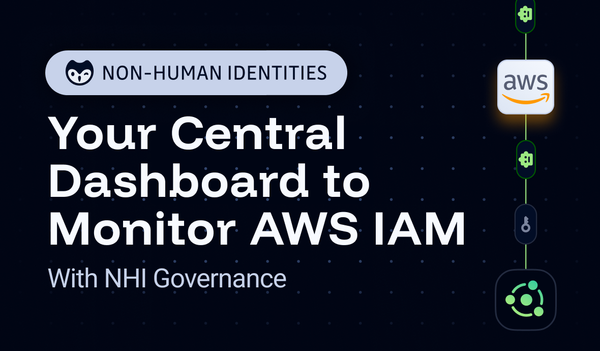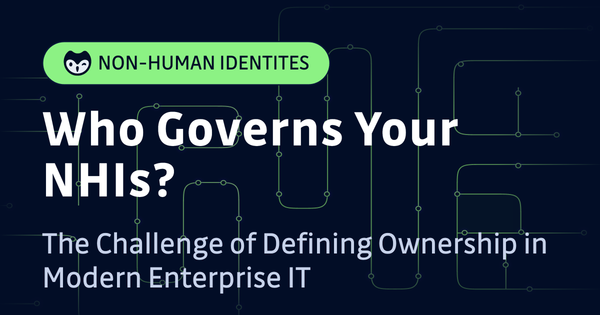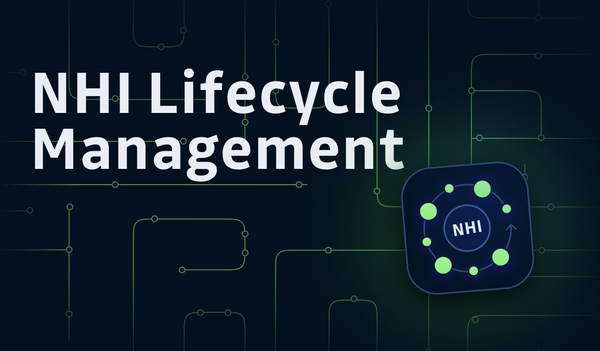Manual management is unscalable. Automation, continuous discovery, and lifecycle management are essential. Organizations must adopt best-of-breed tooling and cross-functional teams to secure non-human identities and maintain business resilience.
In a world obsessed with protecting human identities through passwords, MFA, and SSO, a silent revolution has been taking place in the shadows of our digital infrastructure. Machine identities—and their credentials allowing our applications, containers, APIs, and automated processes to authenticate and communicate—have exploded in number, creating what Gartner has identified as perhaps the most overlooked critical security vulnerability in modern enterprises.
The modern enterprise infrastructure is no longer primarily human-centric. These machine identities, the non-human actors in your environment, include:
- Containerized applications
- Cloud workloads and services
- IoT and OT devices
- APIs and microservices
- Robotic Process Automation (RPA) bots
- Scripts and automated processes
Each requires unique credentials to authenticate, communicate securely, and access resources. The scope is staggering: GitGuardian's research revealed that machine identities account for the majority of the 23,8 million secrets discovered in public repositories in 2024 alone.
The Invisible Identity Crisis
James, a CISO at a mid-sized financial services company, thought his identity security program was comprehensive. His team had implemented robust password policies, multi-factor authentication, and privileged access management for employees. But when a routine security audit revealed thousands of unmanaged service account credentials, hardcoded API keys, and expired certificates scattered throughout their infrastructure, James realized they had been securing only half of their identity landscape.
This scenario plays out daily across organizations worldwide. Machine identities now dramatically outnumber human identities in the typical enterprise—often by a factor of 45 or more. Yet most security programs still focus predominantly on human users.
The rapidly growing number of machines deployed in organizations' hybrid and multicloud environments escalates the importance of managing machine identities and their secrets, keys and certificates," warns Gartner. "Organizations are forced to establish organizational best practices and new team structures, and make tough best-of-breed tooling decisions."
The consequences of this unchecked growth can be severe. When a major financial services company experienced an eight-hour outage affecting millions of customers, the root cause wasn't a sophisticated cyber attack—it was an expired TLS certificate that no one had been tracking. When a healthcare provider discovered unauthorized data access, the culprit wasn't a malicious insider but an orphaned SSH key that had remained valid years after the employee who created it had left the organization.
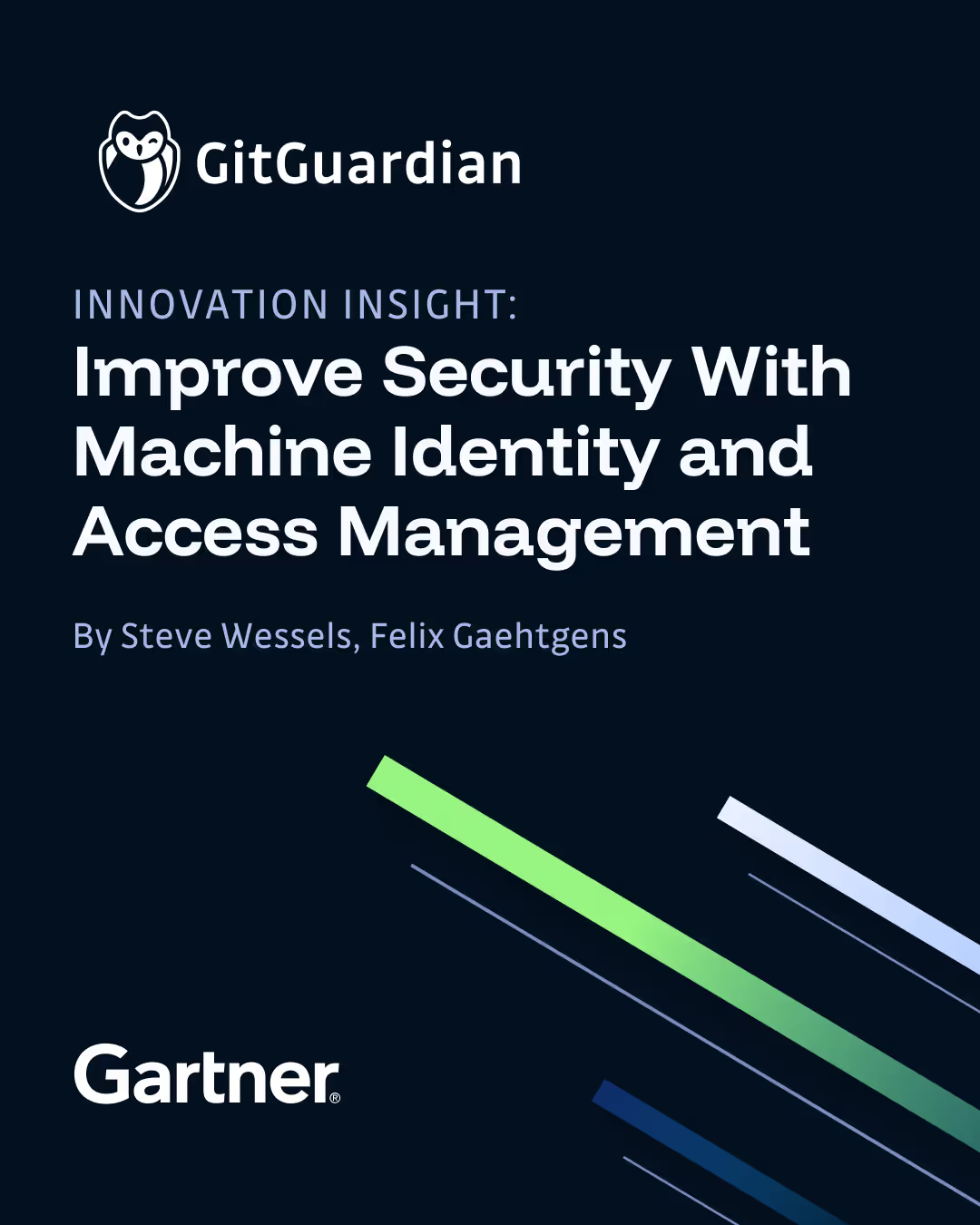
Why Machines Aren't Just Small Humans
The fundamental mistake many organizations make is treating machine identities as simply another type of user account. This approach inevitably fails because machines and humans have fundamentally different identity requirements.Gartner articulates this difference clearly in their comparison table. While humans need privacy protections and intuitive user experiences, machines require clear ownership models and extensive automation.
Human identities are designed around passwords (or increasingly, passwordless mechanisms) and multi-factor authentication, while machines leverage certificates, API keys, and various types of secrets.Consider how these differences play out in practice. When a human forgets a password, they click "forgot password" and follow a recovery workflow.
The machine — non-human — identity requirements of workloads and devices differ from how organizations manage and maintain human identities with additional focus on ownership, automation, discovery and better developer relations.
When a machine's certificate expires unexpectedly, critical systems crash, services become unavailable, and frantic administrators scramble to identify and resolve the issue.
The discovery processes also differ dramatically. For humans, we perform identity proofing at onboarding—verifying government IDs, conducting background checks, or validating employment history. For machines, discovery is an ongoing, never-ending process of scanning networks, code repositories, directories, and cloud environments to find credentials that might be hiding anywhere from a developer's code to a configuration file on a forgotten server.
Discovery of machines is now critical, as you can't manage what you don't know exists. An isolated network, a server that can't be reached, or just a newly provisioned noncompliant system can all hold keys to your kingdom.
Machine Identity Security Risks: The Hidden Attack Surface
The proliferation of machine identities creates a vast, often invisible attack surface that cybercriminals increasingly target. Unlike human credentials protected by multi-factor authentication and password policies, machine identities frequently lack equivalent security controls, making them attractive targets for threat actors.
Credential sprawl represents one of the most significant machine identity security risks. GitGuardian's research reveals that secrets are discovered across millions of public repositories, with many organizations unaware of their full credential inventory. Hardcoded API keys in source code, orphaned service accounts from departed employees, and forgotten SSH keys on decommissioned servers create persistent vulnerabilities.
Privilege escalation through compromised machine identities poses another critical risk. Attackers who gain access to over-privileged service accounts can move laterally through networks, accessing sensitive data and critical systems. The automated nature of machine-to-machine communication means these attacks can progress rapidly without human intervention.
Certificate expiration incidents can cause widespread service disruptions, as seen in major outages affecting financial services and e-commerce platforms. Without proper monitoring and automated renewal processes, expired certificates can bring down entire application ecosystems, impacting business continuity and customer trust.
Automation: The Only Path to Scale
Once organizations understand the scope of their machine identity challenge, they quickly realize that manual management is impossible. The sheer volume of credentials, the speed of modern development cycles, and the complexity of hybrid environments demand automation.
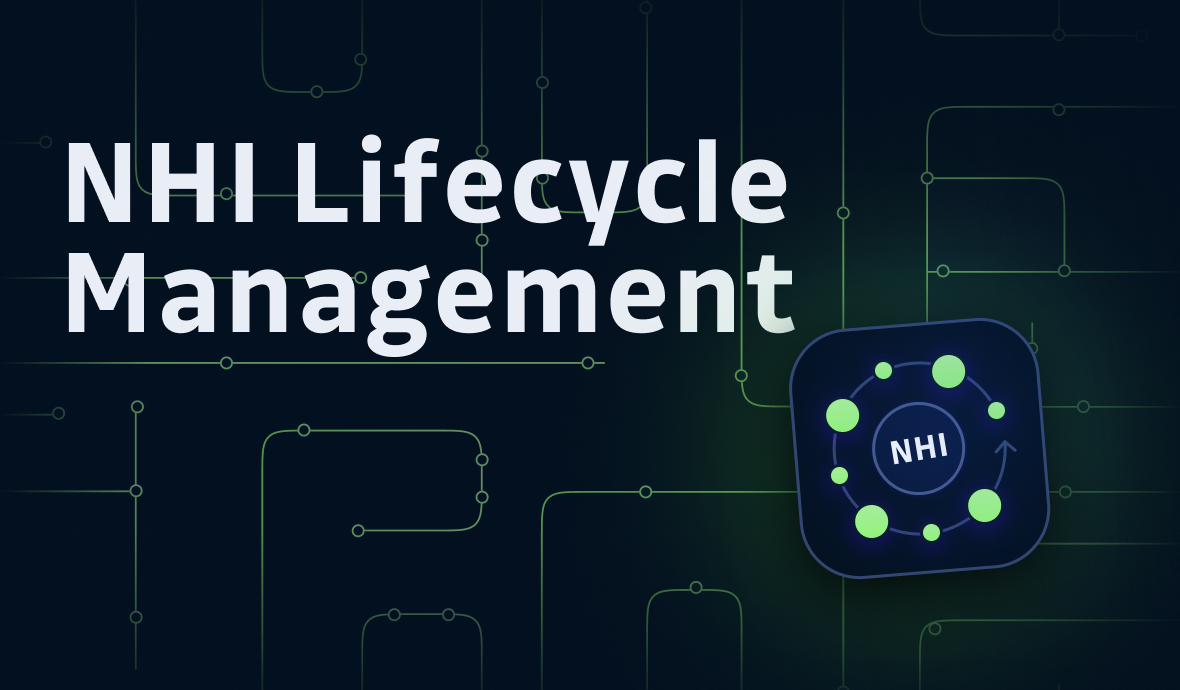
A retail company learned this lesson the hard way after a certificate expiration took down their e-commerce platform during a major sales event. The certificate had been manually renewed the previous year, but the renewal task—assigned to an individual rather than an automated system—was missed when that employee changed roles.
Gartner emphasizes that "automation is a cornerstone of effective management" and recommends organizations implement automated lifecycle management through both standards-based protocols and custom integrations where needed.
This automation takes many forms:
- Automated certificate provisioning and renewal using protocols like ACME (Automatic Certificate Management Environment) ensures TLS certificates are renewed before expiration.
- Just-in-time credential issuance provides temporary, purpose-specific credentials rather than long-lived secrets, reducing the risk window.
- Scheduled secret rotation automatically updates credentials on a regular basis, ensuring that even if a secret is compromised, it has a limited useful lifetime.
- Continuous compliance monitoring automatically identifies policy violations like weak cryptographic algorithms or excessive privileges.
A technology company implemented what they call "identity-as-code"—treating machine identity lifecycle management as an infrastructure component that developers can invoke through APIs and configuration files. "Our developers don't need to become identity experts," their security architect explained. "They just declare what their application needs, and our platform handles the rest."
Gartner advises organizations to "enable automated life cycle management. Either through standards, or where no standards exist, through non-standards-based life cycle management, based on plugins and out-of-the-box integrations to the target applications".
Implementing Automated Lifecycle Management for Machine Identities
Manual management of machine identities becomes impossible at enterprise scale, where organizations may have thousands or tens of thousands of non-human credentials. Automated lifecycle management represents the only viable path to maintaining security while enabling business agility.
Discovery and inventory automation forms the foundation of effective machine identity management. Organizations must implement continuous scanning across code repositories, cloud environments, and network infrastructure to identify all machine credentials. This process should leverage both signature-based detection and behavioral analysis to uncover hidden or obfuscated secrets.
Automated provisioning ensures machine identities are created through standardized, secure processes rather than ad-hoc manual creation. This includes implementing certificate authorities for TLS certificates, automated SSH key generation with proper metadata, and API key creation through infrastructure-as-code templates.
Just-in-time credential issuance provides temporary, purpose-specific credentials rather than long-lived secrets, significantly reducing the attack window. Combined with automated rotation schedules, this approach ensures credentials remain fresh and limits the impact of potential compromises.
Continuous compliance monitoring automatically identifies policy violations such as weak cryptographic algorithms, excessive privileges, or missing expiration dates. This proactive approach prevents security drift and maintains consistent security postures across dynamic environments.
The Journey, Not the Destination
Gartner emphasizes that machine identity management is an evolution, not a one-time project. Their recommended phased approach includes:
- Initiate: Define scope and establish the working group
- Define: Clarify what constitutes machine identities in your environment
- Establish Team: Form the cross-functional machine identity working group
- Make Tooling Decisions: Select appropriate tools for each use case
- Discovery: Begin continuous discovery across environments
- Assess & Report: Measure current state and track improvements
- Define Best Practices: Create guidelines for different teams and use cases
- Catalog & Fix: Remediate high-risk issues and document exceptions
- Automate: Implement automated lifecycle management
- Enable: Provide self-service and developer-friendly interfaces (Gartner, 2023, p.32)
Gartner concludes with this advice:
Adopt best-of-breed strategies to meet all of your needs for managing machine identities. Aim for consistency and control with the help of a machine identity working group. Provide targeted guidance to each team that fits the team's specific narrative to promote adoption. Plan for a multiyear effort instead of a short-term project.
The Time to Act Is Now
As cloud adoption expands, and automation becomes ubiquitous, the machine identity challenge will only grow more complex. Organizations that develop comprehensive strategies now will be better positioned to navigate this evolving landscape securely.This isn't just a security issue—it's a business enablement opportunity. When organizations get machine identity management right, they remove friction from digital processes while strengthening their security posture. That's a win-win that every organization should pursue.
FAQ
What are the primary types of machine identities organizations need to manage?
Machine identities include TLS certificates, SSH keys, code signing certificates, API keys, and cloud service accounts. Each type has distinct security requirements, lifecycle management needs, and risk profiles. Effective machine identity security requires tailored controls for provisioning, rotation, and decommissioning of each identity type.
Why is machine identity security considered a critical risk area by Gartner?
Gartner highlights that machine identities now outnumber human identities by a significant margin, creating a vast and often unmanaged attack surface. Untracked credentials, expired certificates, and orphaned keys can lead to outages, unauthorized access, and lateral movement by attackers, making machine identity security a top enterprise priority.
What are the main risks associated with unmanaged machine identities?
Unmanaged machine identities can result in credential sprawl, privilege escalation, and service outages due to expired certificates. Attackers target these identities because they often lack robust security controls, enabling unauthorized access to sensitive systems and data if compromised.
How can organizations implement automated lifecycle management for machine identities?
Automated lifecycle management involves continuous discovery and inventory, standardized provisioning, just-in-time credential issuance, automated rotation, and compliance monitoring. Leveraging protocols like ACME for certificates and infrastructure-as-code for key management ensures scalability and reduces manual errors.
How does machine identity security differ from traditional human identity management?
Machine identity security focuses on non-human credentials such as certificates and API keys, which require automated discovery, ownership assignment, and lifecycle management. Unlike human identities, machines lack self-service recovery and often operate at scale, demanding continuous monitoring and automation to mitigate risk.
What phased approach does Gartner recommend for establishing a machine identity security program?
Gartner recommends a multi-phase approach: define scope, clarify machine identity types, form a cross-functional team, select appropriate tooling, initiate continuous discovery, assess and report on the current state, define best practices, remediate high-risk issues, automate lifecycle management, and enable developer-friendly interfaces.
